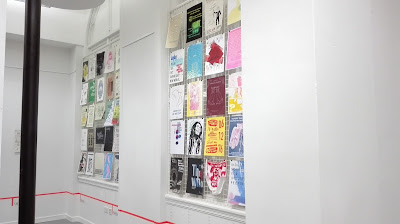Greta Madline
Greta is a Graphic Designer who graduated from Leeds College of Art a few years ago and is currently at The Kennedys (part of Wieden + Kennedys) in Amsterdam. She got chosen after applying four times however her perseverance paid off and she got a place this year. For her application she sent a box of work she made purely for the application to make her stand out. She said putting effort into communication often pays off. She said is there are people / designers that you like then research them and write to them make it personal. When contacting someone its best not to think about it just send the email or send something to them.
In Amsterdam she found it hard initially settling in as it can be hard to adapt, get to know other people and know whats happening. She said the experience so far had be exciting especially when everything is paid for so she could immerse herself in the creative side and at The Kennedys anything goes making it a creative accelerator for those on the project.
She said one of the things that she misses from the college was the facilities. She encouraged us to do what we wanted to do, experiment and do weird stuff while we were there. Having your own passions and finding new things was also important. Things she didn't like in college she loves now.
After leaving university she said it difficult to adjust because she didn't feel she knew what she was doing or how she fitted into the 'industry' however she said it was important to make your own path and to trust your gut feeling, 'You do You'. She said that creativity in general can be used for anything. She suggested that it can be hard not to have an ego but said it stops you creating good work and that keeping work to yourself doesn't help.
She said it was important to fight for your ideas however when people are young they don't have much confidence so often don't.
She said it can be hard work being creative and doesn't get easier however without work you can't get anywhere.
Greta's top tips:
You don't have to do one thing
A lot of people specialise into one thing but she didn't and loves doing everything.
Create your job
Deciding what you want to to do is important and if the job doesn't exist you can make it yourself.
Question everyone
Be silly
Think about the work you want to do outside of university and do it.
Don't be an ass
Just relax a bit
Think about that moment in time and be in the moment.
Whatever you do, make it golden
In any project look for personality or characteristics to make it better.
No one knows
No one ever knows what they are doing.
Stay Golden
Things learnt from Greta:
- By communicating with people in an exciting way makes you stand out. Making it personal is more likely to interest someone.
- It's fine not know what precisely you want to do or how you fit in the industry. Even doing something else is completely fine as you can / will make your own way to do what you want.
- The importance of making work that you have an interest in and taking the opportunity now to experiment and have fun as much as possible.
























































